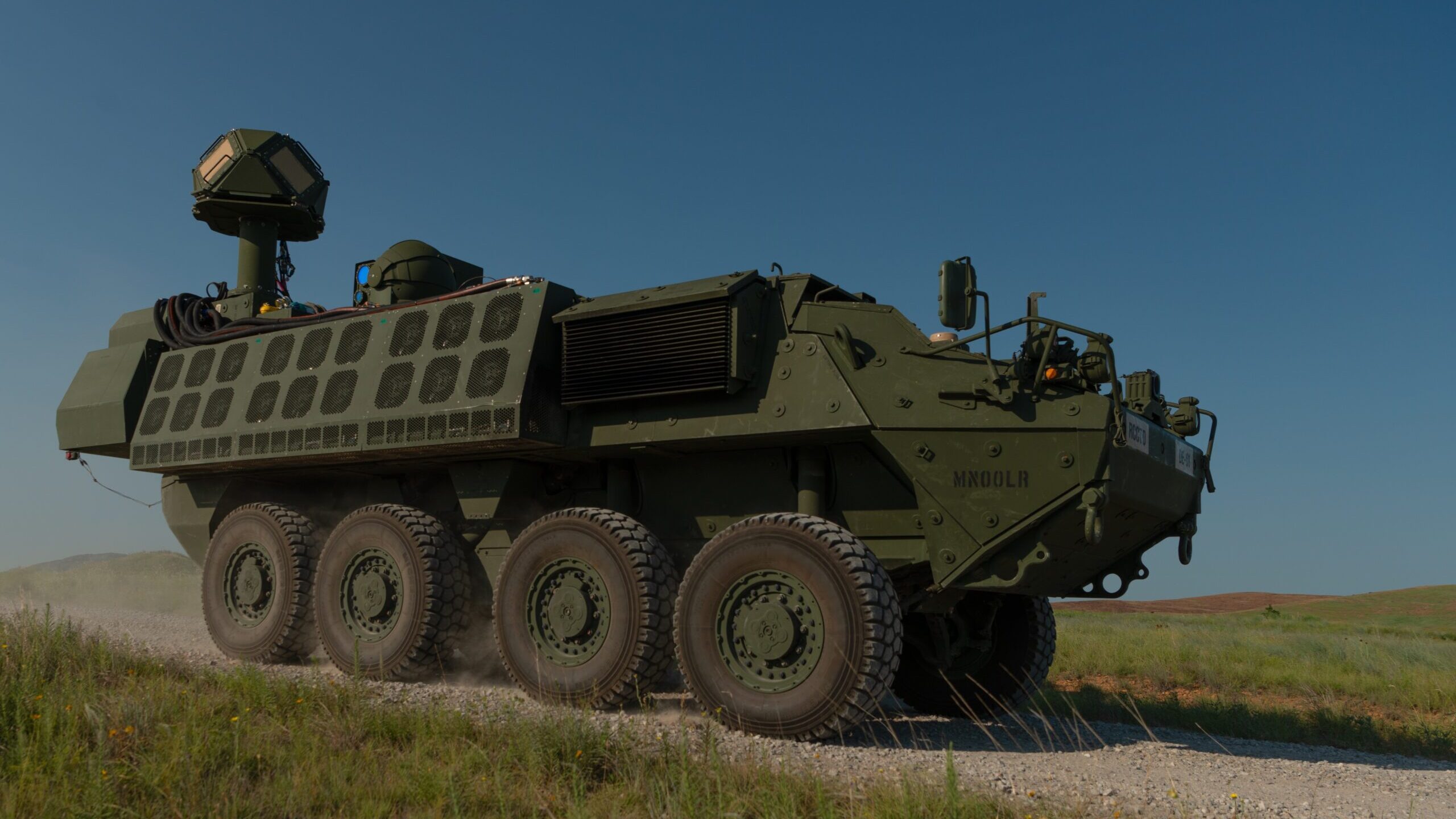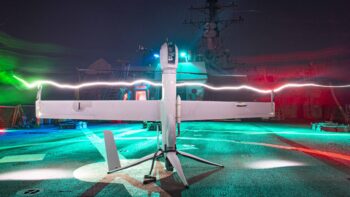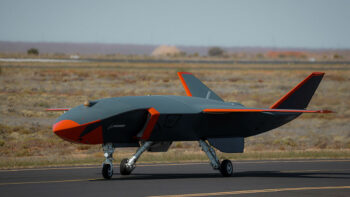
The Army is now working to revamp its DE M-SHORAD prototype. (US Army)
SMD SYMPOSIUM — After the Army receives its fourth and final Stryker-based 50-kilowatt laser prototype next month, soldiers will start to figure out how to use it in combat alongside traditional kinetic weapons, while acquisition officials sort through lethality, affordability and reliability questions, according to a three-star general.
“What we don’t know yet from directed energy systems, necessarily, is… how to fight [with] lasers on the battlefield, how to integrate kinetic and non-kinetic effectors like directed energy and our traditional air defense missiles into the battlespace,” Lt. Gen. Robert Rasch, the director of the Army’s Rapid Capabilities and Critical Technologies Office (RCCTO), told an audience in Huntsville, Ala. today.
Rasch and his team are tasked with overseeing the development of three directed energy programs including Raytheon’s (RTX) work on the Styker-based Directed Energy Maneuver Short-Range Air Defense system, or DE M-SHORAD, to down class 1 to 3 aerial drones and incoming rockets, artillery and mortars. So far, the company has delivered three prototypes to the Army, and the service anticipates receiving the fourth one in September.
RELATED: NORTHCOM’s new defense plan looks to kill missiles before they launch
Once the platoon has all four vehicles, they will begin developing the tactics, techniques, and procedures and training with them ahead of an upcoming operational assessment.
Those soldiers will also receive the kinetic variant of the vehicle-based defense system known as M-SHORAD so that they can test out both together and “find out what’s the right mix of counter-UAS of maneuver SHORAD… to support that maneuver formation,” Rasch said.
While the platoon conducts this “learning” phase, Army leaders have decided to make prototype design changes.
“We’ve already begun the next round of prototyping,” Rasch said. While he did not disclose details about the timing or deliverables for that new prototyping plan, he did note that service leaders are using it to answer questions about lethality, producibility, reliability, and the “big elephant”: affordability.
“We’re doing directed energy, because we don’t have the magazine depth. Quite frankly, we can’t can’t afford the magazine depth to have missiles everywhere that we want,” Rasch said. “So having the capability of directed energy to provide that renewable [kilowatt] power on platform is very appealing, but it’s got to be affordable, it’s got to be reliable.”
FULL COVERAGE: SMD 2023
On that reliability front, Rasch cited concerns about sourcing components for the directed energy weapon. On Tuesday, Gen. Daniel Karbler, the head of US Army Space and Missile Defense Command and Joint Functional Component Command for Integrated Missile Defense, and Maj. Gen. Sean Gainey, the director of the Joint Counter-Unmanned Aerial Systems Office, provided more insights into the reliability problem associated with high-energy lasers.
“Lasers are complicated. This is not a Humvee that’s sitting in the motor pool,” Lt. Gen. Daniel Karbler, the head of US Army Space and Missile Defense Command and Joint Functional Component Command for Integrated Missile Defense, told reporters here in Huntsville, Ala. “Many of the some of the main [laser] components… you’re not going to have a supply room or maintenance office full of repair parts. Those are going to be ones that are going to have to be built out.”






















